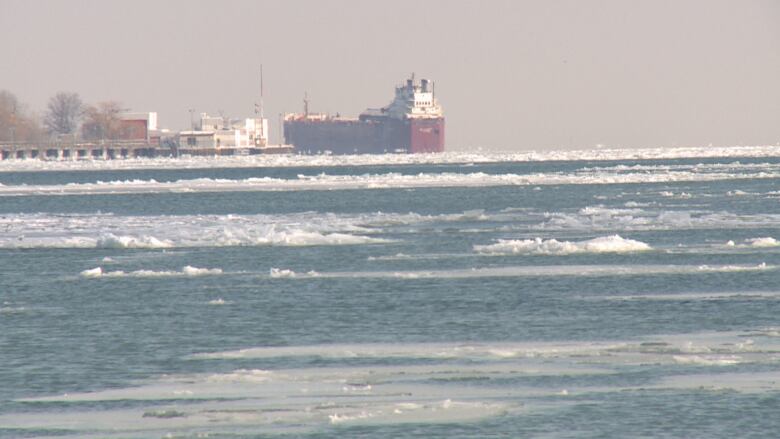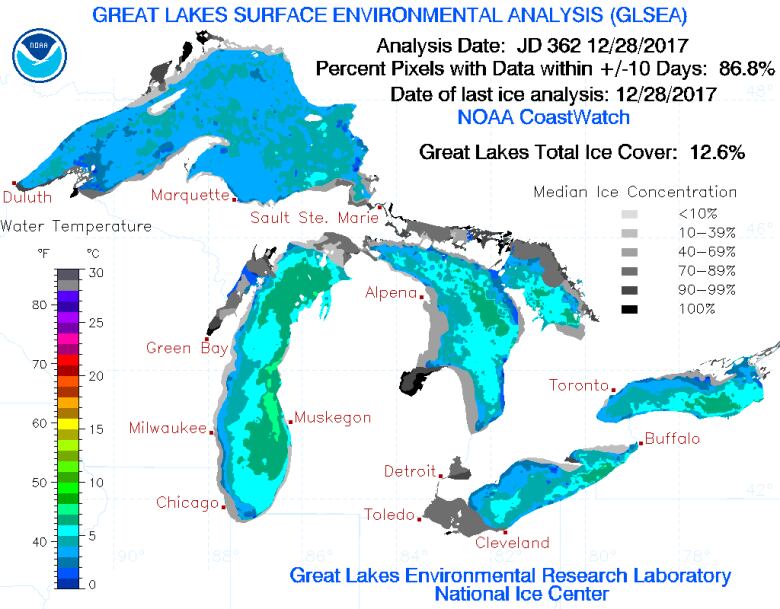Deep freeze causes 'slightly above' average ice coverage on Great Lakes
Canadian Ice Service says Lakes are 5% covered, but U.S. counterpart estimates 12.6% coverage

Ice coverage on the Great Lakes is "slightly above" average for this time of year, according to the Canadian Ice Service.
The Lakes are currently five per cent covered, which is about two per cent higher than the normal average, saidDoug Leonard, senior ice forecaster with the Canadian Ice Service.
"Right now in the Great Lakes we're slightly above normal ice conditions," saidLeonard. "Lake Erie is mostly covered now and we've seen a lot of new ice growthin the last couple of days with cold temperature."
Last year at this time, about four per cent of the Lakes were covered. And in 2015 the numbers were even lower.
"It's all very thin ice and it's all very recently formed," said Leonard.
Map: Ice coverage on the Great Lakes

- Colours represent the concentrations of ice.
- Red represents areas which are completely covered by ice.
- Green and blue represents areas with the lowest coverage.
American numbers
South of the border, the U.S.'s National Oceanic and AtmosphericAdministration (NOAA) charts the ice coverage numbers much higher.
According to NOAA, the Lakes are 12.6per cent covered by ice, compared to 2.9 per cent at this time last year. It's not clear why there is a discrepancy.

Safety first
Leonard said the Canadian Ice Service uses satellite imagingandobservationsfrom ships, planes, and helicopters to chart the ice coverage of the Lakes.
"The main reason is for the safety of anyone who is out in marine navigation," he said.
The thin ice could easily be melted away, Leonard adds, by strong winds or slightly warmer temperatures.
"I would be very surprised to see the entire surface of Lake Erie frozen over in the next few days,: said Leonard, explaining it takes multiple days of very cold temperatures for even a thin layer of ice to form.
Although we have had cold temperatures. #OPP would like to remind the public to always check local ice conditions before heading out on the lake for the day. #BeSafe #PFD @ONresources ^ag pic.twitter.com/oOgjI6hy7t
—@OPP_COMM_WR











_(720p).jpg)


 OFFICIAL HD MUSIC VIDEO.jpg)
.jpg)



























































































